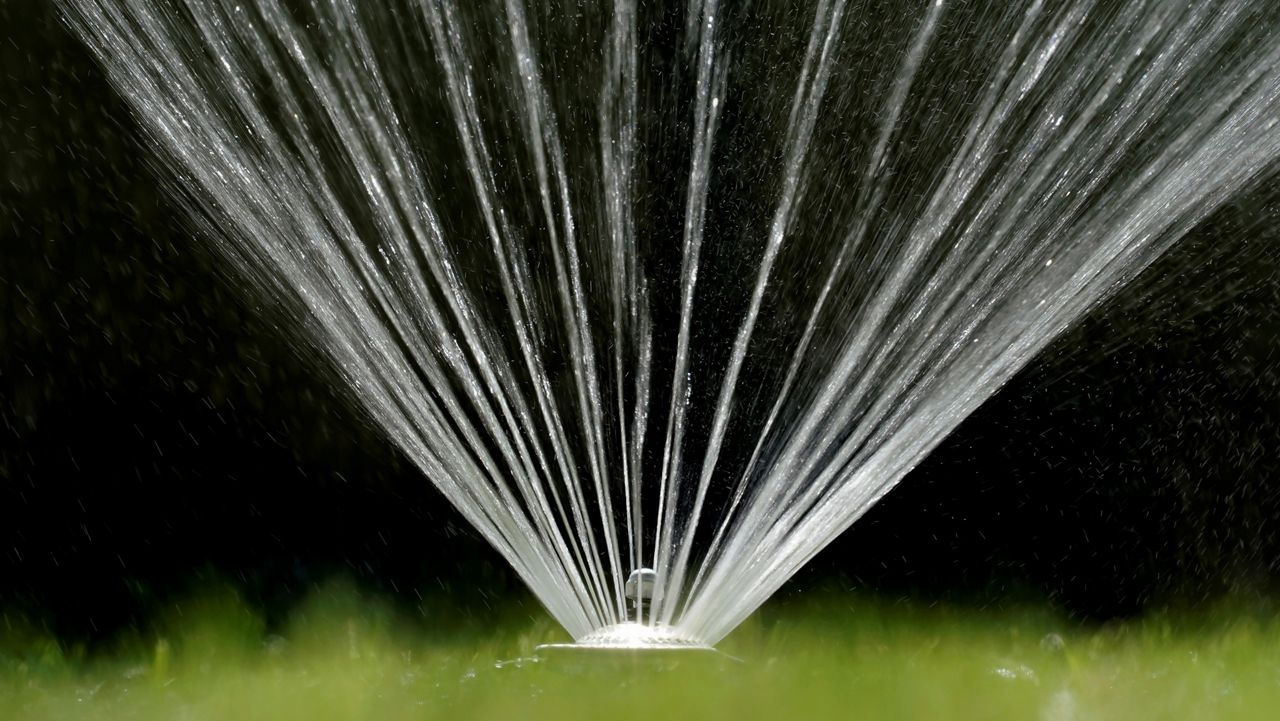LOS ANGELES (CNS) — With warmer spring and summer months approaching, the Los Angeles Department of Water and Power Wednesday urged customers to increase conservation efforts in light of unusually early and rapid snowmelt.
On April 1, the snowpack was 41% of normal, however on Tuesday, less than two weeks later, readings from the DWP's Eastern Sierra snow measuring stations showed it had melted to 22% of normal, the equivalent of 4.9 inches of water content.
What You Need To Know
- On April 1, the snowpack was 41% of normal
- However, on Tuesday, less than two weeks later, readings from the DWP's Eastern Sierra snow measuring stations showed it had melted to 22% of normal
- The DWP said its April snow survey results mirror the state snowpack levels, which remain well below average
- DWP officials said they may need to go to higher restrictions in the coming months to respond to the latest supply conditions
"We've had three consecutive record-dry months during the third year of dry conditions," DWP General Manager and Chief Engineer Martin Adams said. "That, combined with the early-season snowmelt and the anticipated limited availability of State Water Project supplies, has put the city's water supply in a critical situation. This is a time for all of us to be vigilant in saving water wherever possible."
The DWP conducts snow surveys from February to April at six locations in the Eastern Sierra where snowmelt feeds into the Los Angeles Aqueduct, one of four major water sources for Los Angeles. Along with the aqueduct and local groundwater, the DWP receives water from the State Water Project and the Colorado River Aqueduct, both water supplies purchased from the Metropolitan Water District of Southern California.
The DWP said its April snow survey results mirror the state snowpack levels, which remain well below average. The dry conditions combined with low reservoir levels throughout California led to the state's recent decision to cut water allocations from an already low 15% to 5% from the State Water Project, which comes into the DWP's water system via the MWD.
Water officials in the region are assessing drought response actions that may include significant outdoor watering restrictions for impacted areas, according to the DWP.
The utility is one of the few water agencies across the state to mandate water use restrictions continually since 2009. It has remained in Phase 2 of the City's Water Conservation Ordinance, in place since 2009, which limits outdoor watering to three days a week, along with other permanently prohibited uses of water.
DWP officials said they may need to go to higher restrictions in the coming months to respond to the latest supply conditions.
Those planning to conserve more water were urged to take advantage of rebates offered by the DWP, which recently increased. Residential customers are now able to get $500 rebates for high-efficiency clothes-washer purchases and $250 for water-efficient toilet purchases.
The rebates were previously $400 for high-efficiency washers, which use up to 55% less water than standard ones. According to the DWP, the more efficient appliances can reduce water use by more than 11,000 gallons per year.
Rebates for water-efficient toilets were previously $150. Rebate- eligible toilets use about 30% less water than standard models.
DWP business customers can receive $300 rebates for low-flush toilets, which used to have a rebate of $250. Multi-family, commercial and industrial building owners who install large-scale water conservation systems can also receive a $2 million incentive, which was increased earlier this year from $250,000. The Technical Assistance Program incentive is available for pre- approved cooling towers, recirculation systems, recycling microfiltration systems and other upgrades that reduce potable water use by a minimum of 50,000 gallons over two years.
The DWP also offers rebates for people who replace their lawns with sustainable and drought tolerant landscaping. Residential and commercial customers can get $3 per square foot of turf, and public agencies can get $4 per square foot for up to 200,000 square feet of turf.



